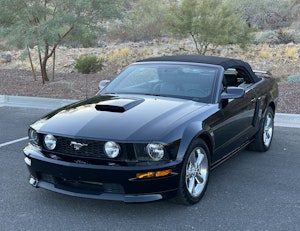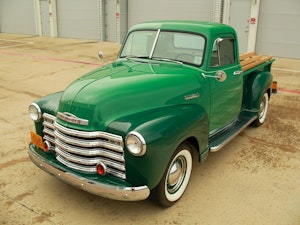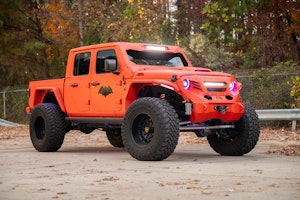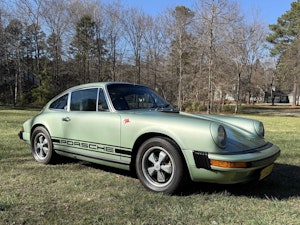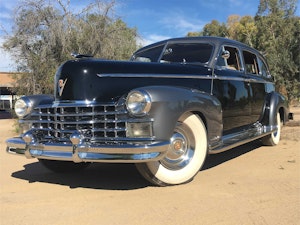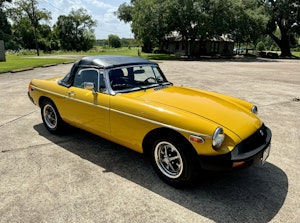Avoidable Contact #147: The last real Mercedes-Benz, maybe
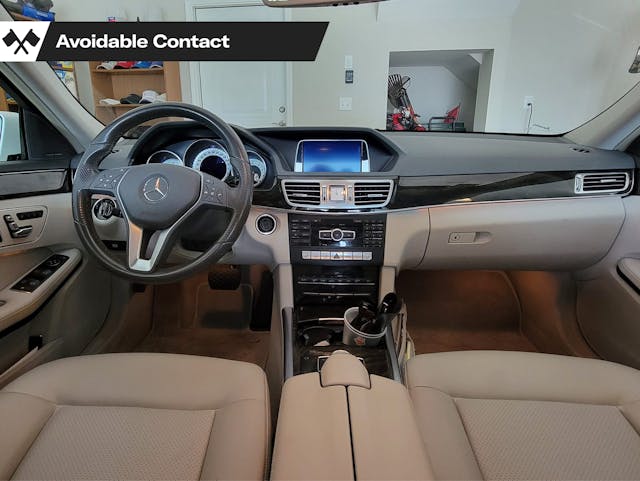
Almost immediately after buying her E350, my father’s wife backed it directly into … something.
“I was just reversing, waiting for it to beep at me, and it never did. It just went crunch! The backup alert must be broken.” I took a look at the contact surface of the rear bumper, which was entirely untroubled by even the suggestion of round sensor eyes.
“It’s not broken. You just don’t have the feature.”
“I don’t have the feature? In a Mercedes?” A bit of further research suggested that this $51,900 sedan was bereft of the “Parking Assistance Package.” For an additional $1290 we could have had the same level of backup sensor protection that probably comes as standard on every Hyundai Kona nowadays. But a base E350 doesn’t have it.
Other things it doesn’t have: a leather interior, an upgraded sound system, hands-free entry, electronic trunk, metallic paint, active power seats, power sun shades … the list really goes on and on. Other than a feckless COMAND nav system, the feature list on this no-options E350 would be very familiar to the buyer of a W124-generation 300E from the Reagan Era, with one exception: You no longer get perforations in the MB-Tex vinyl upholstery. In no way is my father’s wife’s plain-white-wrapper sedan a “luxury car.” It’s neither fast nor quick, neither impressive nor avant-garde. The same money would have bought a rip-snorting C7 Corvette, a capable F-150 King Ranch, a tomb-quiet Lexus GS. My 2014 Accord has it beat for features, speed, and even daytime lighting; most W212 Benzes have frisky LED boomerang running lights in the blobular headlamp enclosures, but this one has a pair of tiny diodes that just scream, “I WANT ONCOMING TRAFFIC TO KNOW EXACTLY HOW PARSIMONIOUS I AM IN ALL THINGS.” The whole car is willfully, depressingly cheap pretty most everywhere you look.
Marketplace
Buy and sell classics with confidence
So why do I love it so? Why have I been begging my dad to sell it to me for the past six years?
I bet some of you understand why, without any explanation whatsoever. You’re probably trying to figure out where my dad lives, so you can swoop in and outbid me on it. Shame on you, attempting to pull a fast one on a fellow Hagerty Drivers Club member!
The rest of my readers might require a little explanation, so here goes. About 50 years ago, the American upper middle class started to get pretty excited about Mercedes-Benz. The reason for said fascination is probably no more complicated than this: even the ponderous 240D diesel mid-sizer cost more than a fully loaded Cadillac de Ville, while the snorting 450SEL cost more than a pair of Eldorados. Not only did the Benzes cost more, they were also far less self-indulgent than the American luxury cars. This played well with the vestigial Puritan hair-shirt philosophy long enjoyed by our East Coast smart set, as did the assertion that a Mercedes-Benz would last longer than the competition. The fellow who chose a clattering diesel W123 Benz over an expansive Lincoln Continental Mark V wasn’t just wealthier than his velour-smothered counterpart; he was also more socially sophisticated. Just as importantly, the combination of a 55-mph national speed limit and highly ambitious EPA “smogging” meant that nobody was really all that put out by the unhurried manner in which the more affordable Benzes went about their business.
When that state of affairs changed in the ’80s, Mercedes-Benz responded with their brilliant “aero” W124 mid-size sedan. The 300E and its siblings were suprisingly fast, handled with alacrity, and went down the freeway like they had a slot-car pin in their noses. There was nothing superfluous about their styling, inside or out. The seats were brilliant, the external visibility was first-rate. After 10 minutes in a W124, everything else in the market seemed just a bit silly. Oh, and they’d run a million miles if you didn’t skimp on the maintenance. It’s hard to imagine a better road car than the straight-six 300E.
Certainly the four-eyed W210 that followed it wasn’t any better. There was a huge amount of cost taken out of the W210, and you can see it everywhere you look. The interiors fell apart, the bodies rusted and became misaligned, the styling aged like milk. That famous DaimlerChrysler “merger of equals” gave us Mercedes-Benzes with the hollowed-out flimsiness of mid-’90s Dodge Intrepids but without that car’s finely judged styling. The next E-Class, the W211, didn’t go far enough to reassure the buyers who had been burned by the W210. Something had to be done.
That “something” was the 2010 W212-body sedan. While Mercedes couldn’t quite bring themselves to restore the absolute visual simplicity of the W124, this was a good first step. It was unashamedly wedge-shaped and minimalist. The interior dispensed with the bizarre organic forms of the W210 and reintroduced high-quality materials. It felt like a natural successor to those ’80s Benzes, as if the round-headlight era had been an extended Dallas Dream Season that never truly happened.
There were a few fussy aspects to the W212’s appearance, most notably the “Ponton” rear fenders and the odd quad-lamp arrangement up front, but those were eliminated in an expensive mid-cycle refresh that clearly recalled the W124 and its Bruno Sacco “aero” styling. There was a good selection of engines, from reasonably sprightly diesel four-banger to handbuilt AMG big-block V-8. This was also one of the first Mercdes-Benzes to offer your choice of traditional upright-grille-with-hood-ornament or SL-styled sport grille. In the case of our family E350 “Sport,” there’s even a charming little splitter under the front airdam … and it’s chrome!
While virtually all modern Benzes have eyeball vents and vast swathes of metal or wood interior trim, the W212 kept it simple with a few inlaid trim pieces and a W124-ish center stack. It’s about five inches longer than a 1986 300E, and three inches wider, but the proportions are essentially the same. Most importantly, it goes down the road with that same slot-car assurance, the heavy-but-dead-feeling steering wheel combining with a superbly rigid body to give the impression that the whole car was forged from a single blank of steel.
There are no “features,” so there’s not much to break. I’m told that today’s MB-Tex isn’t nearly as damage-resistant as the iconic perforated material from the ’70s and ’80s, but it seems hardy enough to me. You could drive three other adults a thousand miles in a single day without too much misery. The interior switch-and-knob layout should be a required subject of study at the headquarters of manufacturers as diverse as Volkswagen and Hyundai, while the frivolity that permeates pretty much every modern “luxury car” is entirely absent. The difference between this E350 and a 2014-era BMW is nearly as stark as the difference between a 1975 240D and a Sedan de Ville from the same year.
When Mercedes replaced the W212, it brought in the eyeball-vent styling and sloping trunk of the larger S-Class. So the current E-Class is far more luxurious, offers far more surprise-and-delight features, competes more directly with the Genesis G80. I suppose it’s progress, but I like the older car. It feels like the last “real” Benz to me, replaced by something that actually tries to be a “luxury car.” The best Mercedes-Benzes of bygone days didn’t try to be luxurious, nor did they strive for a visual “wow factor.” The idea behind the 1986 300E, and the 2014 E350, was simple. You paid a ton of money and you got a frills-free sedan that felt like it could be driven through a brick wall without vibrating the steering wheel. To me, that’s what Mercedes-Benz always was, and what it should be in the future.
As noted above, I’ve been trying to buy this car for quite a while now. It would be just peachy for the long trips I take to Hagerty’s offices in northern Michigan. You can run 85–90 mph on the freeways up there and receive no police attention. The plain-white wedge Benz would be completely at home in those conditions, plus it would return reasonable fuel economy. The seats wouldn’t show much wear from eight-hour shifts behind the wheel, and the durable touch points would stay looking fresh as they do now, eight years after the car left a German assembly line.
Dad is not inclined to let it go, particularly in this market, and who can blame him? I’ll keep trying, however. I went down to his place last week and dropped a few strategic hints. “If you think about it for a minute … that old Benz isn’t as comfortable as the new ones. You say the dealership won’t update the navigation software any more? Ridiculous. Well, the current E-Class has over-the-air updates, I think. And they all come with rear parking sensors now. That’s worth the switch, in my opinion. Let me worry about backing into things.”
“I don’t know,” he replied, “this one hasn’t had anything go wrong with it.”
“That’s because,” I suggested, hoping I wasn’t giving the game away, “there’s nothing to go wrong. It’s got no options!” We parted ways agreeing to disagree about the E350’s future. Eventually he’ll change his mind and I’ll be right there to take advantage. When that happens, you—and everyone else—will want to be very careful about getting between that slick back bumper and the nearest light post. If all else fails, and you’re about to be squashed, try making a high-pitched beeping noise.


